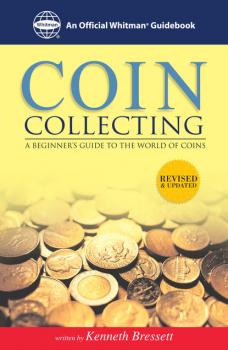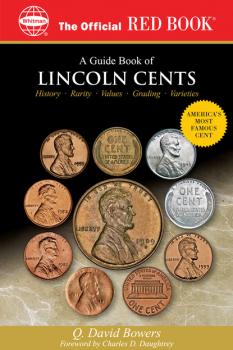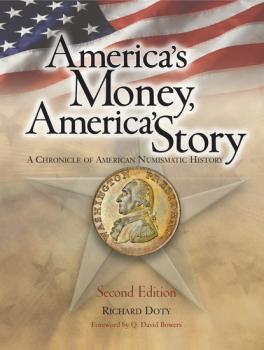ТОП просматриваемых книг сайта:
Изобразительное искусство, фотография
Различные книги в жанре Изобразительное искусство, фотография, доступные для чтения и скачиванияАннотация
This book offers a much-needed overview of numismatics—the hobby, the historical connection, and the investment possibilities of rare coins. This is an up-to-date, comprehensive guide that explains everything a new collector needs to know. You will learn about getting started in the hobby, mint marks, varieties, and what makes a coin valuable. It also contains information on how to care for your collection, grading, where to find valuable coins and how to identify counterfeit and altered coins.
Аннотация
In this beautifully illustrated book, two of America’s best-known numismatists take the reader on a personal guided tour of our nation’s greatest currency notes. They’re all inside: the Lazy Deuce, the Tombstone Note, the Buffalo Bill, and more. You’ll see some familiar faces, such as Abraham Lincoln, George Washington, and even Santa Claus… and meet some unique and colorful characters like the mad Emperor Norton. Battleships and locomotives, Army officers and Indians, politicians and polar bears—all these and more await you among the 100 Greatest American Currency Notes.
Аннотация
Lincoln cents account for nearly a third of the coins the United States has ever minted. In recent times the mintage of Lincoln cents has reached more than five billion per year—nearly equaling the mintage of all the other circulating coins combined. The Lincoln cent is an ever-evolving submarket within the growing field of numismatics. With its wide value swings for higher grade earlier pieces and thousands of documented die varieties, this series has something to offer every collector from novice to expert. This book provides collectors with unique insight into the longest-running series of coins in United States history with its detailed facts and figures as well as notes,contemporary articles, and other documentation assembled by the most prolific numismatic author in our lifetime.
Аннотация
When you learn about the money of the United States of America, you learn the story of how our nation came to be…and catch a glimpse of where it's headed. This is a book for everyone who loves the drama, romance, and exciting twists and turns of American history – from the preEuropean days of beaver-pelt money to today's world of gold bullion and Presidential dollars. (Includes many photographs from the Smithsonian's National Numismatic Collection.)
Аннотация
Ian Adams is perhaps the best-known landscape photographer in Ohio, and in the first volume of A Photographer’s Guide to Ohio, he shared his knowledge of what to photograph in the Buckeye State and how to photograph it. Now, in this second volume, Adams expands on his previous work, adding over 120 natural features, scenic rivers and byways, zoos and public gardens, historic buildings and murals, and even winter lighting displays to the list of places to visit and photograph in Ohio. In addition to advice on photographing landscapes, he offers tips for capturing excellent images of butterflies and dragonflies. Recognizing the rapid development of new technologies, Adams includes pointers on smartphone photography, lighting and composition, digital workflow, and sharing images across a variety of platforms. The book is illustrated with more than 100 color photographs. Comprehensive and concise, these two volumes make up a travel and photography guide to almost 300 of Ohio’s most noteworthy and beautiful outdoor places.
Аннотация
Art has a way of raising questions. Since 2009 the Guggenheim Forum has pondered how themes from art affect life outside the museum’s walls: What is the role of spirituality in contemporary life? What is reality in the virtual era? And what’s in a name? By bringing together writers, scientists, artists, and other experts from diverse fields, the Guggenheim Forum examines complex topics from all points of view, stimulating a lively dialogue among panelists. This volume gathers nine conversations from the Forum’s first four years. Participants include NPR’s Krista Tippet, designer Ellen Lupton, artist Martha Rosler, author Douglas Hofstadter, and novelist Francisco Goldman.
Аннотация
This digital publication accompanies the exhibition Making is Thinking that took place at Witte de With Center for Contemporary Art (23 January – 1 May 2011).The publication features a historical perspective on craft by Alice Motard; a short story by Yoshiko Nagai, inspired by Teppei Kaneuji’s animation Tower; a conversation between artist Ane Hjort Guttu and Solveig Øvstebø titled The Emancipation of Forms; an essay by Gavin Delahunty on the work of Koki Tanaka and Julia Dault; and an afterword by curator Zoë Gray.
Аннотация
Repair is a design constraint and an outcome of product design. It’s also a practical activity performed—or not—on designed objects. Similar skills and understanding are required to design and fix things well, but these shared capacities are applied to very different practical ends. Both agents, the designer and the repairer, seek to solve similar problems, but from opposing starting points, with different goals and limitations. Holistic, empathic thinking is key from either vantage; empathy for the user as well as the object is vital. Design for Repair investigates the historical and current state of repair in material culture as it applies specifically to product designers. The economic, technical, and psychological limitations to making things more repairable are explored, with the electric toaster taken as an example. The repairable products of several designers operating under special contemporary conditions are examined in detail, and the implications that a more repairable material culture might have for issues including personal agency, macro- and microeconomics, and the environment are considered.
Аннотация
Leading artists, theorists, and writers exhume the dystopian and utopian futures contained within the present “I am the supercommunity, and you are only starting to recognize me. I grew out of something that used to be humanity. Some have compared me to angry crowds in public squares; others compare me to wind and atmosphere, or to software.” Invited to exhibit at the 56th Venice Biennale, e-flux journal produced a single issue over a four-month span, publishing an article a day both online and on site from Venice. In essays, poems, short stories, and plays, artists and theorists trace the negative collective that is the subject of contemporary life, in which art, the internet, and globalization have shed their utopian guises but persist as naked power, in the face of apocalyptic ecological disaster and against the claims of the social commons. “I convert care to cruelty, and cruelty back to care. I convert political desires to economic flows and data, and then I convert them back again. I convert revolutions to revelations. I don’t want, I want to leave, and then disperse myself everywhere and all the time.”
Аннотация
Leading art critic explores the connections between art’s past and present Contemporary art sometimes pretends to have made a clean break with history. In The Perpetual Guest, poet and critic Barry Schwabsky demonstrates that any robust understanding of art’s present must also account for the ongoing life and changing fortunes of its past. Surveying the art world of recent decades, Schwabsky attends not only to its most significant newer faces—among them, Kara Walker, Thomas Hirschhorn, Ai Weiwei, Chris Ofili, and Lorna Simpson—but their forebears as well, both near (Jeff Wall, Nancy Spero, Dan Graham, Cindy Sherman) and more distant (Velázquez, Manet, Matisse, and the portraitists of the Renaissance). Schwabsky’s rich and subtle contributions illuminate art’s present moment in all its complexity: shot through with determinations produced by centuries of interwoven traditions, but no less open-ended for it.










